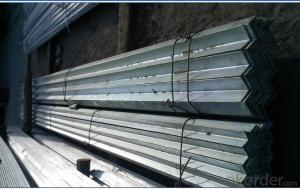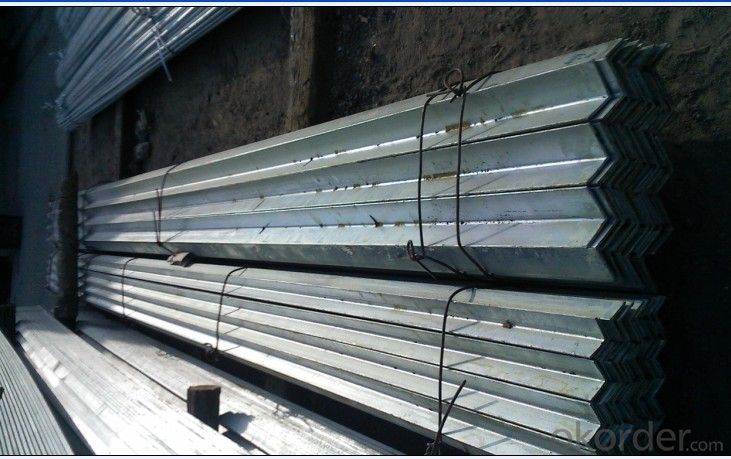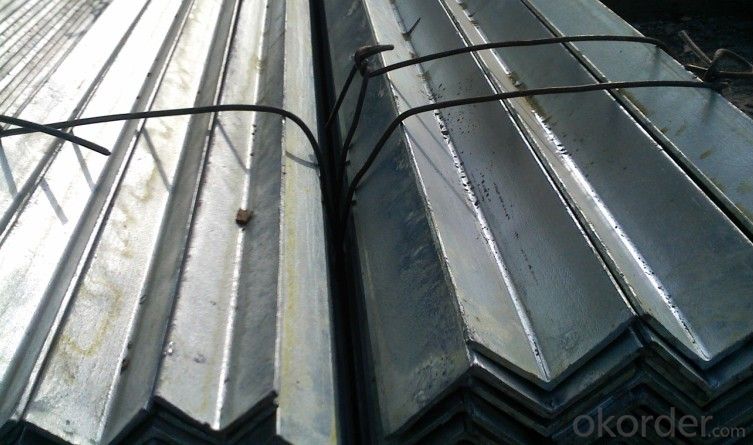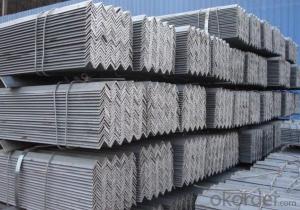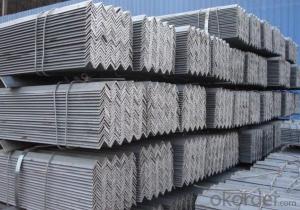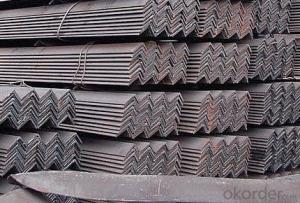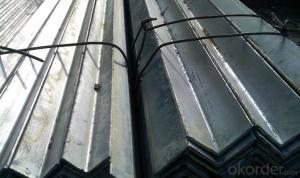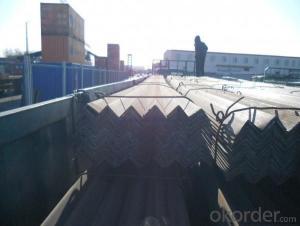Angle Steel with High Quality for Construction
- Loading Port:
- Tianjin
- Payment Terms:
- TT OR LC
- Min Order Qty:
- 25 m.t.
- Supply Capability:
- 20000 m.t./month
OKorder Service Pledge
OKorder Financial Service
You Might Also Like
Specification
Product Description:
OKorder is offering Angle Steel with High Quality for Construction at great prices with worldwide shipping. Our supplier is a world-class manufacturer of steel, with our products utilized the world over. OKorder annually supplies products to European, North American and Asian markets. We provide quotations within 24 hours of receiving an inquiry and guarantee competitive prices.
Product Applications:
Angle Steel with High Quality for Construction are ideal for structural applications and are widely used in the construction of buildings and bridges, and the manufacturing, petrochemical, and transportation industries.
Product Advantages:
OKorder's Angle Steel with High Quality for Construction are durable, strong, and resist corrosion.
Main Product Features:
· Premium quality
· Prompt delivery & seaworthy packing (30 days after receiving deposit)
· Corrosion resistance
· Can be recycled and reused
· Mill test certification
· Professional Service
· Competitive pricing
Packaging & Delivery of Angle Steel with High Quality for Construction:
Packaging Detail: products are packed in bundle and then shipped by container or bulk vessel, deformed bar is usually naked strapping delivery, when storing, please pay attention to moisture proof. The performance of rust will produce adverse effect.
Each bundle weight: 2-3MT, or as required
Payment term: TT or L/C
Delivery Detail: within 45 days after received advanced payment or LC.
Label: to be specified by customer, generally, each bundle has 1-2 labels
Trade terms: FOB, CFR, CIF
Images:
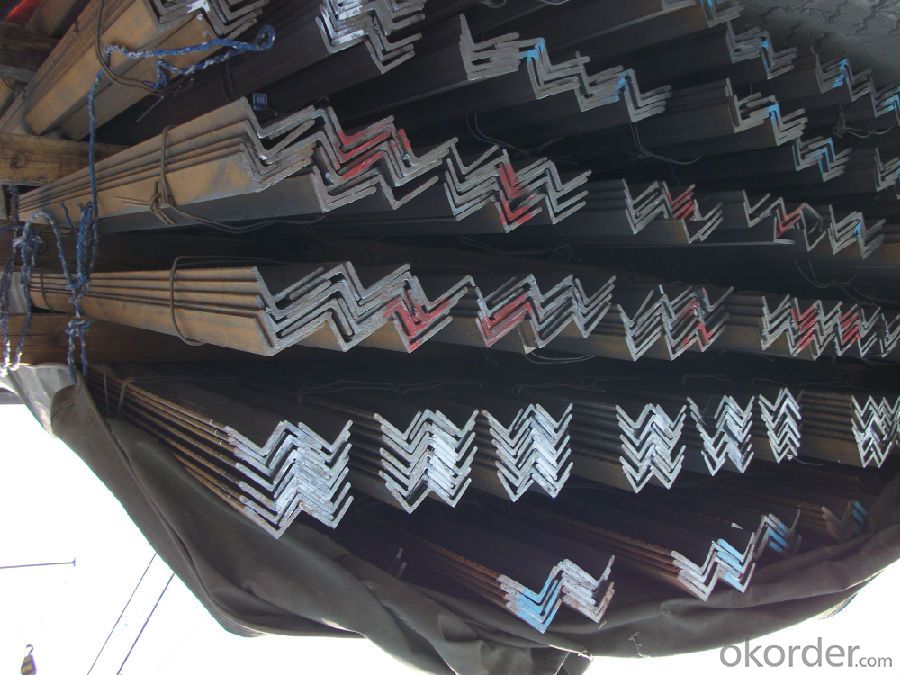

- Q: Can steel angles be used for door frames?
- Yes, steel angles can be used for door frames. Steel angles provide strength and stability, making them a suitable choice for supporting and reinforcing door frames.
- Q: What is the standard tolerance for steel angles?
- The standard tolerance for steel angles typically ranges from +/- 1/8 inch to +/- 1/4 inch, depending on the specific dimensions and requirements of the angle.
- Q: What are the typical lengths of steel angles available in the market?
- The market offers a range of steel angle lengths to meet specific project needs and requirements. While there are standard lengths readily available, ranging from 20 to 40 feet, such as 20, 25, 30, 35, and 40 feet, customization is also possible through special orders or fabrication. This flexibility allows for meeting precise project requirements in construction and industrial applications, where steel angles are used for structural support, framing, and bracing.
- Q: How do you protect steel angles from weathering?
- One way to protect steel angles from weathering is by applying a protective coating, such as paint or galvanization. These coatings create a barrier between the steel and the elements, preventing moisture and oxygen from reaching the surface and causing corrosion. Regular inspections and maintenance are also important to identify and address any signs of deterioration or damage early on.
- Q: What are the different specifications for steel angles?
- The different specifications for steel angles include the dimensions (length, width, and thickness), the weight per foot, the shape of the angle (equal or unequal leg), the type of steel used (such as carbon steel or stainless steel), and any additional features or finishes required (such as galvanized or painted).
- Q: Can steel angles be used in mezzanine or raised platform construction?
- Yes, steel angles can be used in mezzanine or raised platform construction. Steel angles are commonly used as structural supports in construction due to their strength and durability. They can be used as framing elements to create the framework of the mezzanine or raised platform. Steel angles provide stability and support to the structure, ensuring its robustness and ability to withstand heavy loads. Additionally, steel angles can be easily welded or bolted together, making them a versatile choice for construction projects.
- Q: Can steel angles be used for shelving and storage racks?
- Yes, steel angles can be used for shelving and storage racks. Steel angles are commonly used in construction and industrial applications due to their strength and durability. They provide excellent support and stability, making them suitable for organizing and storing various items on shelves and racks.
- Q: What are the dimensions of a standard steel angle?
- The dimensions of a standard steel angle typically include the length of the legs and the thickness of the steel.
- Q: What are the different methods of surface preparation for steel angles?
- Some of the different methods of surface preparation for steel angles include abrasive blasting, chemical cleaning, and mechanical cleaning. Abrasive blasting involves using a high-pressure stream of abrasive material to remove rust, scale, and other contaminants from the surface of the steel. Chemical cleaning involves using chemicals to dissolve and remove rust and other contaminants. Mechanical cleaning involves using tools such as wire brushes or sandpaper to physically scrape or scrub the surface of the steel to remove rust and other contaminants. These methods are important in preparing the steel surface for painting, coating, or other forms of protection against corrosion.
- Q: How do you calculate the deflection of a steel angle?
- To calculate the deflection of a steel angle, you would need to consider several factors and apply the appropriate formulas. The deflection of a beam or angle is typically calculated using the Euler-Bernoulli beam theory, which assumes that the beam is slender and experiences small deflections. First, you need to determine the moment of inertia (I) of the steel angle. This can be calculated using the dimensions and properties of the angle section. The moment of inertia represents the resistance of the angle to bending. Next, you should determine the applied load or force (F) acting on the steel angle. This could be a concentrated load, distributed load, or a combination of both. The load will cause a bending moment (M) on the angle. Once you have determined the moment of inertia and the bending moment, you can use the formula for deflection in a simply supported beam: δ = (5 * M * L^4) / (384 * E * I) Where: - δ is the deflection at the midpoint of the steel angle - M is the bending moment acting on the angle - L is the length of the angle - E is the modulus of elasticity of the steel material - I is the moment of inertia of the angle section By plugging in the appropriate values into the formula, you can calculate the deflection. It is important to ensure that the units are consistent and compatible when performing the calculations. However, note that this calculation assumes linear behavior and neglects factors such as shear deformation and lateral torsional buckling. For more accurate results, you may need to consider additional factors or consult engineering resources, such as design codes or software, to obtain a more precise deflection calculation.
Send your message to us
Angle Steel with High Quality for Construction
- Loading Port:
- Tianjin
- Payment Terms:
- TT OR LC
- Min Order Qty:
- 25 m.t.
- Supply Capability:
- 20000 m.t./month
OKorder Service Pledge
OKorder Financial Service
Similar products
Hot products
Hot Searches
Related keywords
